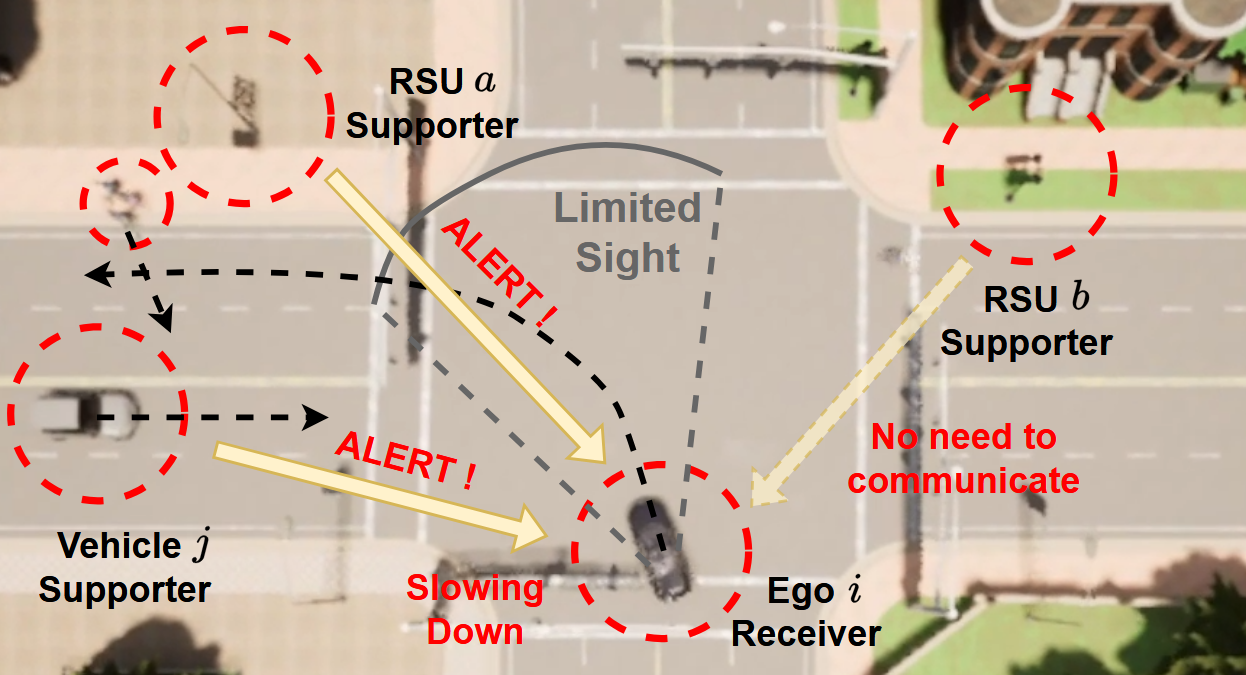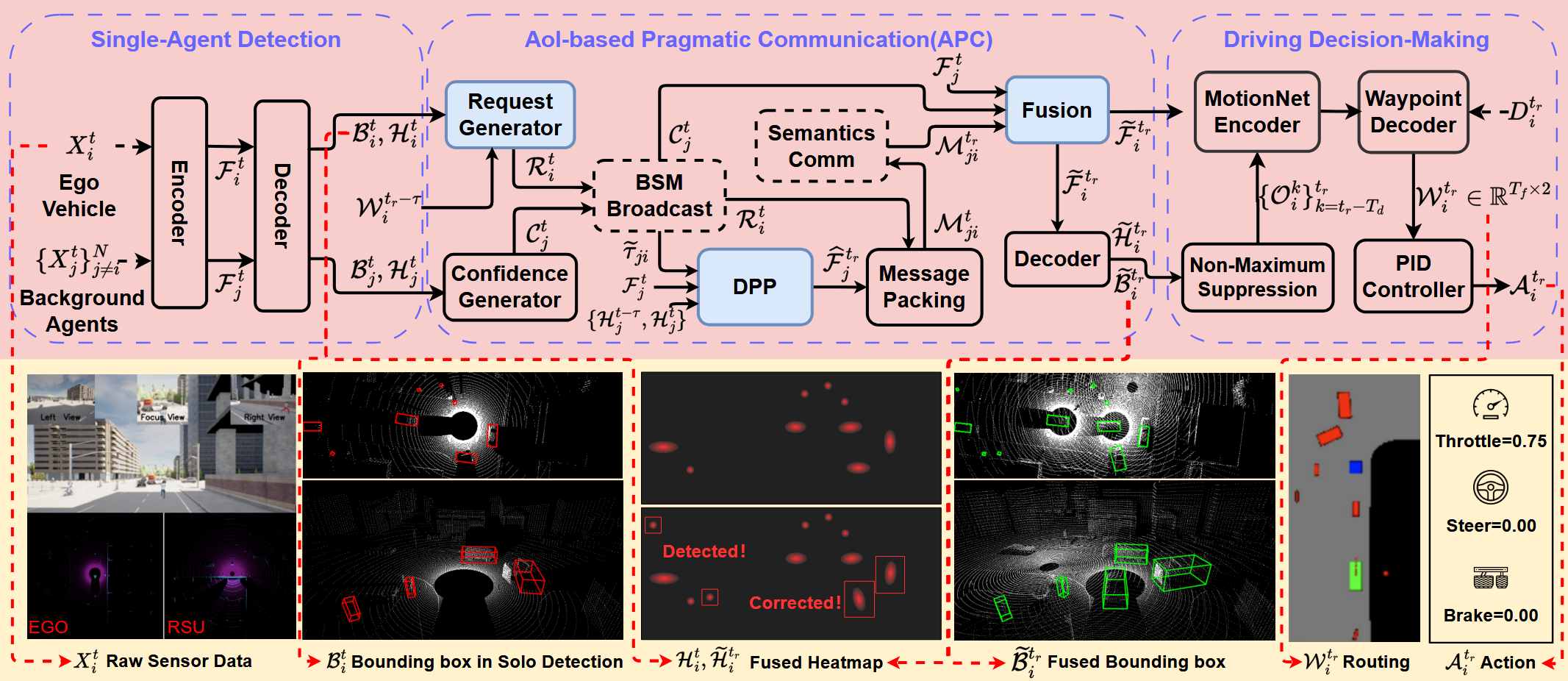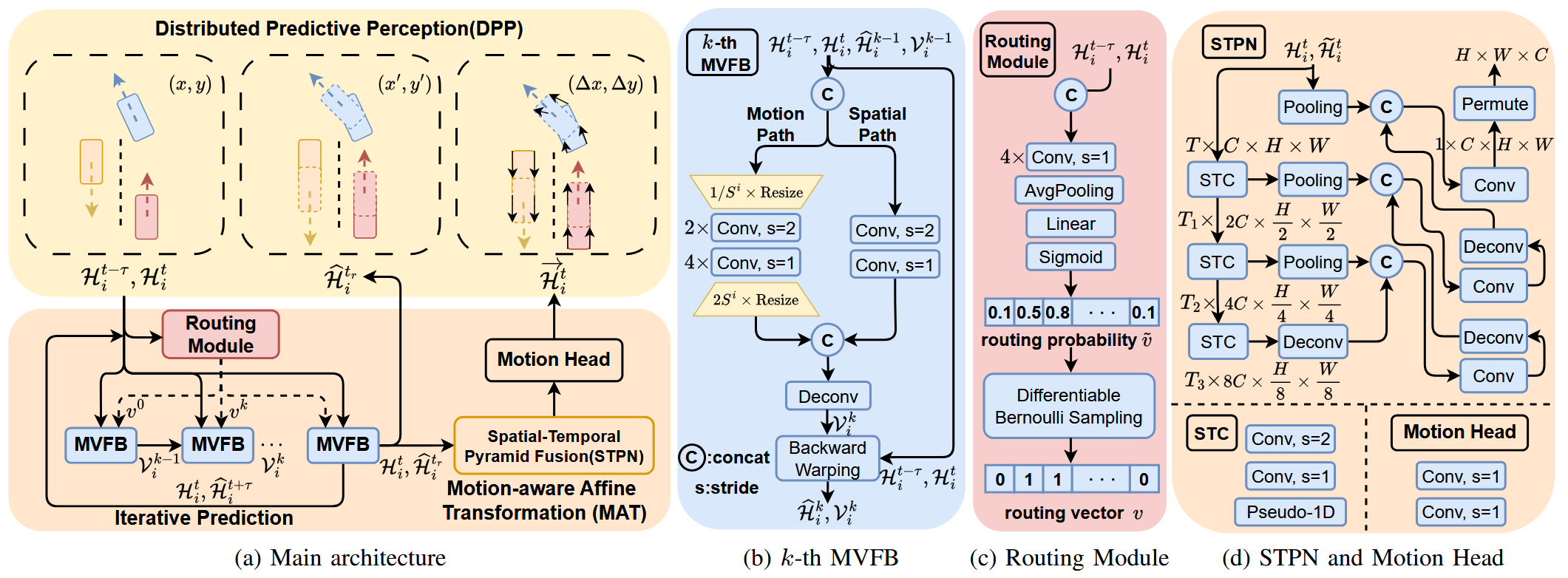Select2Drive -- Pragmatic Communications for Real-Time Collaborative Autonomous Driving
Manuscript Information
Jiahao Huang, Jianhang Zhu, Rongpeng Li, Zhifeng Zhao and Honggang Zhang, ”Select2Drive: Pragmatic Communications for Real-Time Collaborative Autonomous Driving,“ T-ITS, Sep.2025, accepted.
In Vehicle-to-Everything (V2X) communications-assisted autonomous driving, optimizing the use of limited resources to ensure the timeliness and relevance of shared information is essential for safe and efficient real-time collaboration. We present two complementary components toward pragmatic and resource-efficient collaborative driving, which has been accepted.
First, we build a simulation platform for integrating joint perception with downstream decision-making. Based on the CARLA simulator, this platform is designed to transition collaborative perception methods from offline dataset evaluations to closed-loop driving scenarios. It not only provides an extensible interface for multi-vehicle cooperative driving but also established a high-fidelity testing environment. Through this platform, we can comprehensively evaluate the system-level driving performance of end-to-end autonomous driving systems in dynamic, near-real-world conditions.

Figure 1: An overview of V2X-AD, where safe navigation relies on pragmatic communication of critical information from nearby supporters.

Figure 2: Architecture of the proposed V2X-AD framework, detailing the perception, decision-making, and control pipeline.
Second, We designed two core components: Distributed Predictive Perception (DPP) and Area-of-Importance-based Pragmatic Communication (APC). To counteract information staleness caused by system latency, the DPP module compensates for delays by inferring future high-dimensional semantic features from low-dimensional motion flow, ensuring the ego-vehicle receives the most timely environmental data. Concurrently, the APC module adheres to a “less is more” principle by restricting communication to driving-critical “Areas-of-Importance,” prioritizing the most relevant data for downstream decisions. This optimizes communication resources and enhances decision-making efficacy. In essence, DPP ensures the timeliness of information, while APC guarantees its relevance and efficiency, combining to create a robust and effective real-time collaborative driving framework.

Figure 3: Architectural overview of the Distributed Predictive Perception (DPP) framework.

Figure 4: Performance evaluation of the proposed DPP framework on the collaborative perception task.

Figure 5: Qualitative results of the proposed framework in challenging collaborative autonomous driving scenarios.
In essence, Select2Drive presents a holistic framework to enable timely and resource-efficient real-time collaborative autonomous driving.